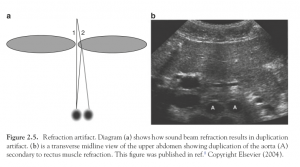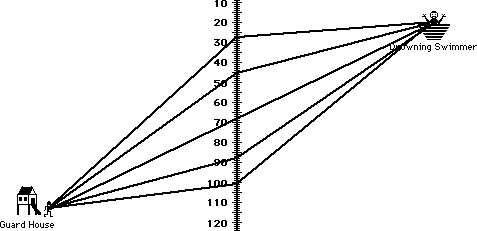IBM’s supercomputer research team has been pushing the boundaries of what computers are capable of. Their Deep Blue first beat Kasparov at chess almost 20 years ago. Later, IBM’s Watson beat Ken Jennings at Jeopardy. And now the same Watson is tackling the most difficult problem yet – cooking and creativity.
IBM Research has begun work on an unnamed cyberchef, an AI system designed to create new dishes that can delight our palates at their theoretical peaks of enjoyment.
Why bother teaching a computer how to cook? Of course, the first reason is that it advances computer science. But there is another interesting angle. The supercomputer could cook up recipes that have never been seen by man, because there are some things that computer are just better than humans at:
For example:
In the case of the flavorbot, these “new things” IBM is after range from spotting underrated, highly flavorful ingredients (like black tea, bantu beer and cooked apples), strange-but-tasty flavor pairings (like white chocolate and caviar, jamaican rum and blue cheese, or even bell pepper and black tea), and even whole recipes, complete with basic preparation steps.
And how does Watson do this? Unsurprisingly, this is rather difficult. More interestingly, lots of science and maths comes into play here.
This is a high level description of what the AI needs to do:
To generate these food leads, if you will, AI cross references three databases of information:
- A recipe index containing tens of thousands of existing dishes that allows the system to infer basics like “what makes a quiche a quiche”
- Hedonic psychophysics, which is essentially a quantification of whether people like certain flavor compounds at the molecular level
- Chemoinformatics, which sort of marries these two other databases, as it connects molecular flavor compounds to actual foods they’re in
And here is a journalist’s article about the results; he was sent a bottle of Watson’s Bengali Butternut Barbeque Sauce and this is what he found:
When I unwrapped the brightly colored box and found the bottle inside, I immediately flipped to the back label. Most BBQ sauces start with ingredients like vinegar, tomatoes, or even water, but IBM’s stands out from the get go. Ingredient one: White wine. Ingredient two: Butternut squash.
The list contains more Eastern influences, such as rice vinegar, dates, cilantro, tamarind (a sour fruit you may know best from Pad Thai), cardamom (a floral seed integral to South Asian cuisine) and turmeric (the yellow powder that stained the skull-laden sets of True Detective) alongside American BBQ sauce mainstays molasses, garlic, and mustard.
I pour a bit of the bottle onto a plate of roasted tofu and broccoli–even a pork lover has gotta watch his cholesterol–and tentatively took a bite. Watson’s golden sauce may have the pulpy consistency of baby food, but it packs a surprising amount of unique flavor.
Immediately, you can taste the sweet warmth of the wine and the squash. The tamarind blends seamlessly, backed by a duo of vinegars, to tickle your tongue with just the right amount of tartness. The other flavors combine to leave an indefinable, warm aftertaste that, as you have a few more bites, actually heats your mouth–thanks to Thai chiles
This resulted in a reddit discussion, and one of the people working on this project showed up to share details of how exactly it works:
In a nutshell, however, Watson consumes massive amounts of recipes from different sources and then parses out the ingredients and steps. It also takes in information about the basic flavor compounds in ingredients, the general nature of ingredients, and, perhaps most interesting, a database of the “pleasantness” of flavor compounds, and a few other things that really make up Watson’s “secret sauce”.
From there it’s a collaborative creative process between chef and watson. It typically starts with an ingredient. Let’s say “cardamom”. Watson then searches the database, which is a pretty straight forward process, for the types of cuisine that have that ingredient. For cardamom there are about 100 different cuisines from Indian to Swedish to Bhutani and Barbadian that have a recipe somewhere that uses cardamom. Next it searches through the recipe database to pick out recipes that have cardamom in it. Cardamom is most often found in soups and cake, but it also can be found in things like fudge, baklava, and kebabs.
In the next step Watson starts to create a template of what it thinks might go in Swedish/Barbadian fudge with cardamom. Here’s where you can go crazy with Watson. The most common elements are automatically selected, but there’s lots of other options. For example, most fudge has a sweetener, chocolate, dairy, oil, and some nuts. Because we wanted cardamom, Watson recommends some spices too. You can go crazy and add in things like meat, alcohol, cheese, and a variety of other things at this step. You can’t just add in anything you want because there are some things that Watson has a hunch will just turn out to be nasty.
In the final step Watson generates a number of recipes that meet the guidelines provided. It tries to ensure that the ingredients selected match up with the various cuisines and also with the dish selected. In addition, using some of the “secret sauce” it makes sure that the ingredients will taste good together too. At the end it presents a number of recipes rated on scales such as “surprise”, or how rare is recipe like this compared to the database, “pairing”, or how well do the flavors pair or contrast with each other, and “pleasantness” which is based on the science of hedonic psychophysics. From there the chef works with Watson to find the best recipe.
That final paragraph sounds so cool. You randomly suggest a bunch of ingredients to a supercomputer and it comes up with interesting recipes based around your rough guidelines, while all the time preventing you from totally screwing up and ensuring that the resultant dish will taste good. (But, this is also reminding me of Arthur in the Hitchhiker’s Guide to the Galaxy and his struggles to get Eddie, the shipboard computer, to make him some tea.
References:




